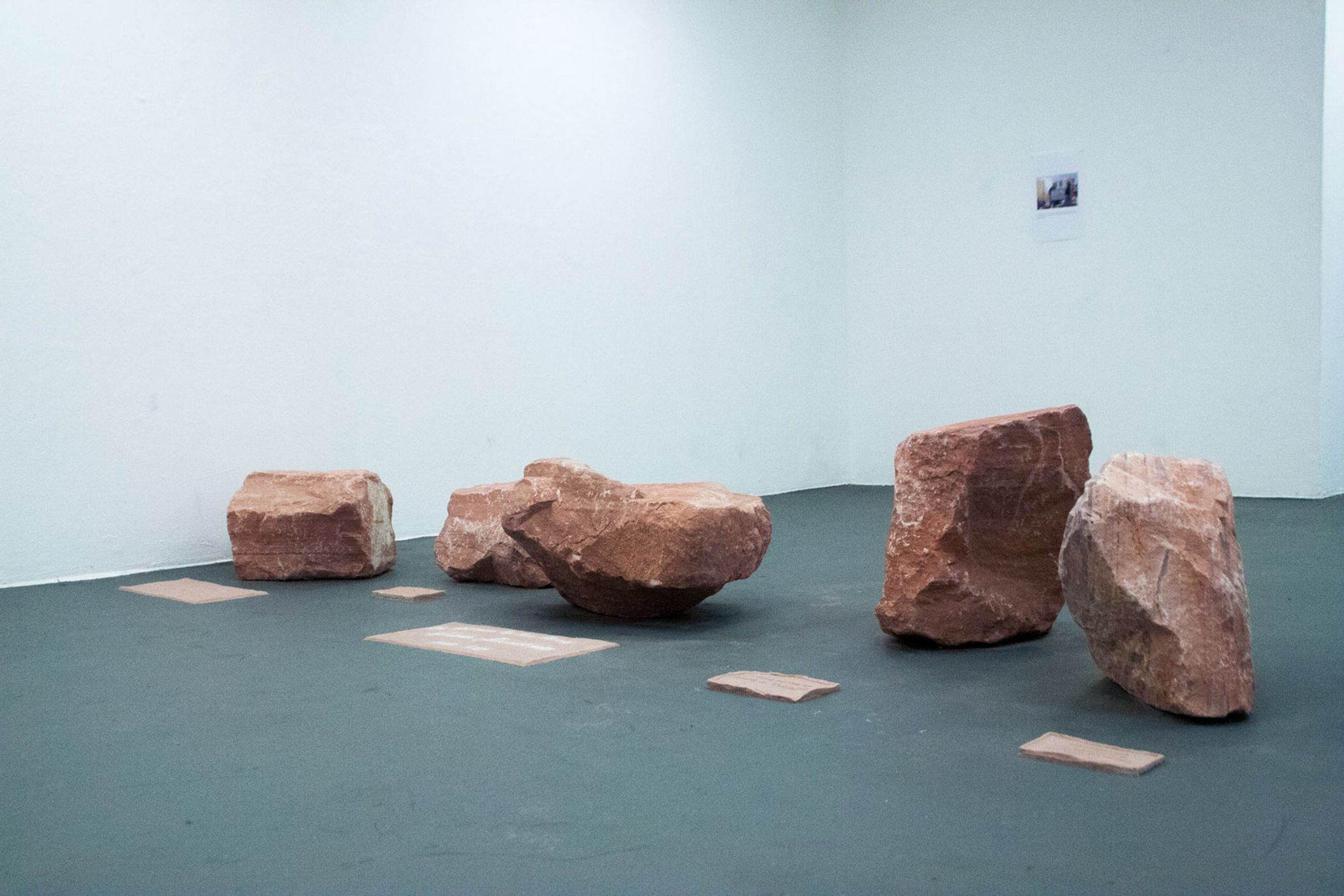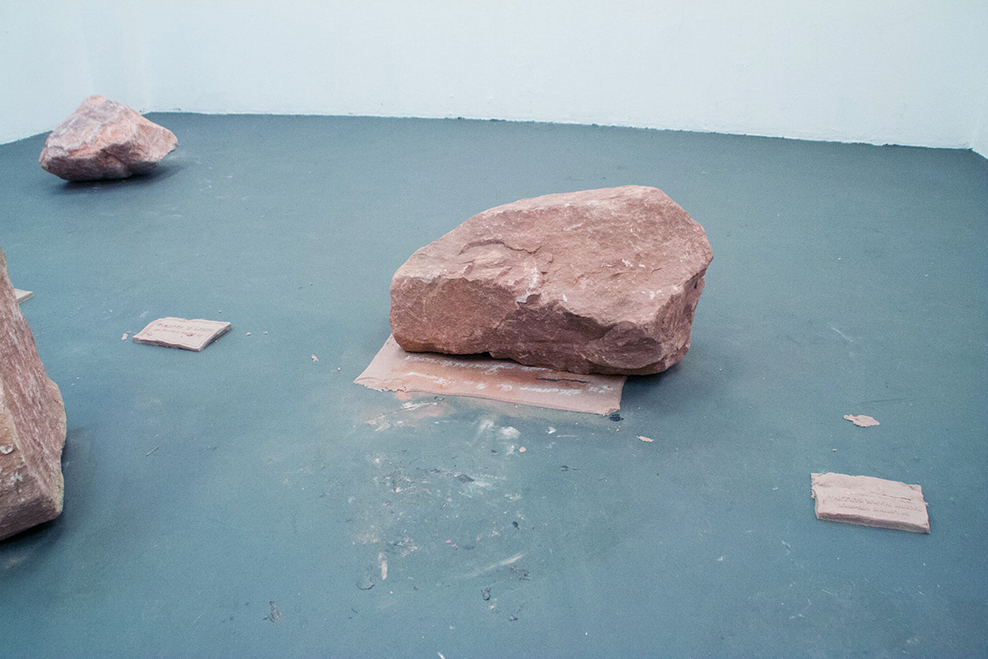Sculpture Garden / Las Vegas Pinks
Calarts and Human Resources, Los Angeles







Above images: Sculpture Garden, video installation, Human Resources, Los Angeles, CA, 2016. Las Vegas Pinks, sandstone boulder, kinetic sand, laserjet print, Gallery A402, Calarts, Valencia, CA, 2015. Performance featuring aarum at the opening of Las Vegas Pinks.
Six rock memorials within the Calarts’ campus landscaping honor the deceased: two students, a facilities manager, two teaching faculty, and a dean. No institutional protocol nor policy governed the creation of these sites. No guidelines for expressing grief exist in the school's literature. The memorials were created ad hoc through the organization of friends and colleagues, and often times completely unknown to the higher powers of the administration (I found that President Steven Lavine knew of only four of the six). I was drawn to these memorials of rock, scattered at different locations around campus. I began seeing them as sites which unite secular spirituality with nature. I attempted to relocate these six memorial rocks into a gallery space for my MFA thesis exhibition at Calarts.
In creating a rock memorial on campus, the name of the deceased person is inscribed or cast in bronze and adhered to an attractive free-standing rock. It is crucial that the rock is large enough to not be easily moved. The choice of site for the rock is equally as important as its material: it is installed in a semi-quiet area; the rock’s face is positioned to be seen by the viewer while standing from a specific vantage point, and it has a pleasing view of the landscape beyond as a backdrop. They are usually sited near the affiliated department of the deceased. Once the rock is placed, the memorial becomes alive in its function and is extant as the sum of its parts—remove the memorial rock from its site, place it in a gallery, and it ceases to be a memorial. It is as much its site, its ceremonial activities, its routine use and maintenance, as it is the rock. The rocks as they stand in the landscape are loosely tended by the Calarts’ landscaping crew, but mostly are left untouched and ungoverned. I believe they will continue to be unmolested by young art guerillas to come, due to a nearly universal social contract that regulates honorific sites of identity beyond death, while they also evoke the looming sense of mortality in their stony gaze. As spiritual objects, the memorials attempt to facilitate the collective need to grieve while in a secular art context.
In these memorial objects, death is symbolically and materially aligned with nature. In their scenes of private of existential contemplation, the name of the person who has ‘left’ the body is identified by the natural rock, materializing the belief that in death they have ‘returned to nature/God’. This denotes that during life they were outside of nature/God. Standing and looking down at this site, onto the smooth inscribed rock face of Alexander ‘Sandy’ MacKendrick, you find yourself protected by the soft shade of the only magnolia tree on campus while a rose garden (also planted in his memory) extends to both your right and left. Here, one may imagine the deceased, reunited with nature in their personal Eden.
 Six memorials made of rock found on the Calarts campus, 2015.
Six memorials made of rock found on the Calarts campus, 2015.